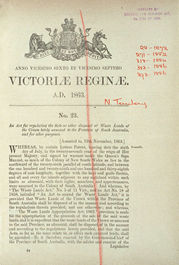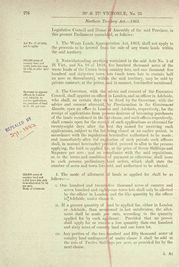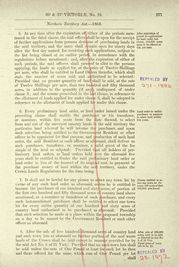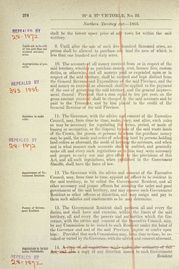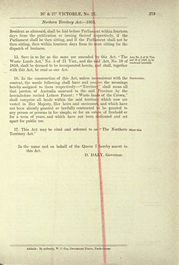

Northern Territory Act of 1863 (SA)
Significance
This document is a 1934 copy of the Act which extended the laws of South Australia to the newly annexed Northern Territory and provided for the sale of half a million acres of land before survey or occupation.
History
The British Colonial Secretary thought the standard South Australian land legislation needed to be modified for the Territory. The South Australian Parliament agreed and hastily introduced legislation.With land sales proposed for early in 1864, a Bill was drafted and debated in some haste to ensure passage in the 1863 session, the first Parliamentary sitting after the arrival in the Colony of the Letters Patent, effecting the transfer of the Territory from New South Wales to South Australia. The Bill was passed and became law when the Governor signed his assent on 12 November.
This law did not address the question of land settlement in the Territory, nor direct any revenue to development. This was a distinct departure from Edward Gibbon Wakefield's 'systematic colonisation' plan which had laid the foundations of South Australia less than 30 years before. Revenue from land sales defrayed the cost not of immigration to the new colony, as Wakefield had laid down, but of its governance.
The South Australian Parliament was consistently of the view that the Territory must pay for itself and at least at first, this happened. Land sales were held in Adelaide and London from 1 March 1864, the buyers receiving vouchers for portions of land, location unspecified. In six months, a quarter of a million acres (100 000 hectares) was sold, sight unseen, a welcome if temporary boost to government revenue. Land revenue, which had been declining, quadrupled to reach the highest level in the Colony's history in 1864–65.
However, the land survey expedition, under BT Finniss, had not even left Adelaide when the first sales were held, and it was two months before their voyage began, and another two before they had set up their base and exploratory parties were reporting on the nature of the country. The site nominated was at the Adelaide River entrance, where the expedition was to survey the main town of Palmerston. From the military-like stockade Finniss established there, country was explored, but a year later only a tenth of the amount of land already sold had been surveyed. The expedition was recalled at the end of 1865, and disgruntled buyers began legal action while the Government sought ways to meet their obligations under the sale contracts.
Finally, in 1869, the Government sent George Goyder, the South Australian Surveyor-General to solve the problem, allowing him to select his own site for the main township. He chose Port Darwin, and his survey camp below Fort Hill became the nucleus of the town, with the Lands Office first operating out of the stables. After the surveyors completed the survey of 665 000 acres of town and country lands in six months, Goyder returned to Adelaide. Events that formed the basis for the early development of the Northern Territory included the arrival of land selectors (mostly agents for landowners who never came to the Territory), a Government Resident who arrived in July 1870, followed by the first of the teams for construction of northern sections of the overland telegraph line from Adelaide, and then shiploads of prospectors for the Territory's short-lived goldrush.
Sources
Heatley, Alistair and Nicholson, Graham, Selected Constitutional Documents on the Northern Territory, Northern Territory Department of Law, Darwin, 1989.
Powell, Alan, Far Country: A Short History of the Northern Territory, Melbourne University Press, Melbourne, 1996.
Description
This document, located in the South Australian government archives, does not appear to be the Assent original. It is reproduced here as the earliest archival record of this founding document. | Long Title: | An Act for regulating the Sale or other disposal of Waste Lands of the Crown lately annexed to the Province of South Australia 1863 and for other purposes. (No. 23 of 1863) |
| No. of pages: | 5 |
| Medium: | Paper |
| Measurements: | 21.5 x 34 cm |
| Provenance: | South Australian Parliament |
| Features: | Signature |
| Location & Copyright: | State Records of South Australia |
| Reference: | SRSA: GRG 24/131 |
